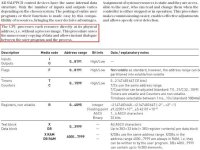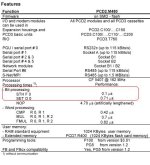I read it post http://www.plcs.net/dcforum/DCForumID1/1983.html.
Question: What brand PLC, sub-routine update outputs before image table ?
Coments:I know, is possible IMMEDIATE OUTPUT UPDATE in use special instrutions make is Instrutions: UPDATE BIT or BYTEs
Please, reply small words, short phases.
NOTE: Some PLC's allow for IMMEDIATE OUPUT UPDATE . In that case, the state of the output, according to the current rung, is updated to the Image Table AND updated to the actual Output.
Question: What brand PLC, sub-routine update outputs before image table ?
Coments:I know, is possible IMMEDIATE OUTPUT UPDATE in use special instrutions make is Instrutions: UPDATE BIT or BYTEs
Please, reply small words, short phases.







